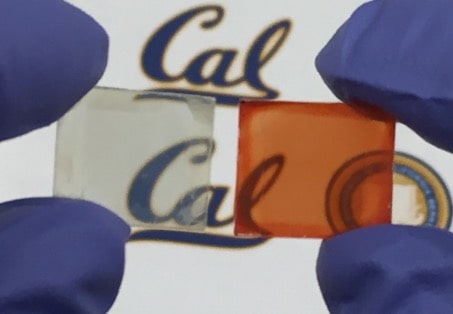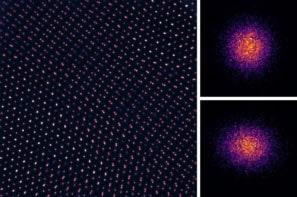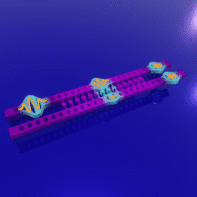
Photovoltaic windows, which go from being transparent to opaque and which can convert absorbed sunlight into electricity, are a promising green technology. One new such window, based on the reversible phase transition in thermochromic halide perovskite cells, could be integrated into smart buildings, cars, large-screen displays and potentially many other technologies.
Windows that go from being transparent to opaque have been around in one form or another since the 1970s. These devices are made from electrochromic, thermochromic and liquid crystal materials and their transparency is controlled by simply absorbing or reflecting sunlight. Although they provide shade when it is sunny and hot outside and become transparent when it is dark or cold, they do not convert incoming solar energy into electricity, which means that it is, to all intents and purposes, wasted. Although photovoltaic windows that can harvest and exploit incoming solar energy are beginning to appear, most of the semiconductors used in these structures cannot be reversibly switched between a transparent phase and a non-transparent phase without deteriorating their electronic properties.
A team led by Peidong Yang of the University of California at Berkeley, the Lawrence Berkeley National Laboratory and the Kavli Energy NanoScience Institute has now utilized the reversible phase transition in purely inorganic mixed halide perovskites to produce two intrinsic characteristic states – one that is highly transparent (and which can thus function as a window) and the other that strongly absorbs light (and which can thus function as a shade). The structure can also generate electricity from incoming sunlight and the two states can be switched back and forth automatically or when needed, explains team member Jia Lin.
“We are able to reversibly switch between the transparent and non-transparent phases in the halide perovskite semiconductor without deteriorating its electronic properties – something that has not been achieved before,” he tells nanotechweb.org. “The concept could have broad applications in smart optoelectronics, such as windows in buildings and cars, information displays and many more.”
Inorganic halide perovskites
Halide perovskites have the chemical formula ABX3 (where A is typically methylammonium, formamidinium or caesium, B is lead or tin, and X iodine, bromine or chlorine). They are one of the most promising thin-film solar-cell materials around today because they can absorb light over a broad range of solar-spectrum wavelengths. Researchers have in fact succeeded in increasing the power-conversion efficiency (PCE) of solar cells made from these perovskites from just 3% to more than 22% in the last five years. This means that their PCE is now comparable to that of silicon-based solar cells.
Recent experiments revealed that substantial structural changes occur in the purely inorganic perovskites caesium lead iodide/bromide when they undergo phase transitions – often between a room-temperature non-perovskite phase (low-T phase) and a high-temperature perovskite one (high-T phase). These two phases have distinct optoelectronic properties (which is not the case for the more well-known organic-inorganic hybrid halides, such as perovskite methylammonium lead-iodide).
“We used these inorganic mixed perovskites as the photoactive materials and added the inorganic oxide materials nickel oxide and zinc oxide as charge (electron and hole) extraction layers,” explains team member Letian Dou. “We then added semi-transparent indium tin oxide (ITO) and fluorine-doped tin oxide (FTO) layers as electrodes to make an inverted planar p-i-n heterojunction architecture.”
“We fabricated all the layers (except for the FTO and aluminium) using solution-processing, which is an easy and cost-effective technique. We then applied heat and moisture to control the phase transition of the perovskite layer.”
Window when cool or dark to solar cell when hot and sunny
The researchers found that the material did not degrade, even after 10 switching cycles and that 85% of efficiency was retained after 40 cycles. In these cycles, they heated the samples to 190°C before cooling to room temperature. Switching to the solar state takes about 30 minutes, while the reverse process (of becoming transparent) takes several hours.
Ideally, windows made from this structure would be self-adaptive and switch between the window mode when it is cool or dark outside to the solar cell/opaque shade mode when it is hot and sunny, says Lin.
The team, reporting its work in Nature Materials doi:10.1038/s41563-017-0006-0, is now busy trying to better understand the mechanism behind phase transitions in inorganic perovskite systems in general. “We will also be trying to enhance the power output when the device in the high-T phase solar cell mode and better control the switching process, including lowering the phase transition temperature,” adds Lin. “We are also improving the device architecture so that it is stable over a longer period of time.”



